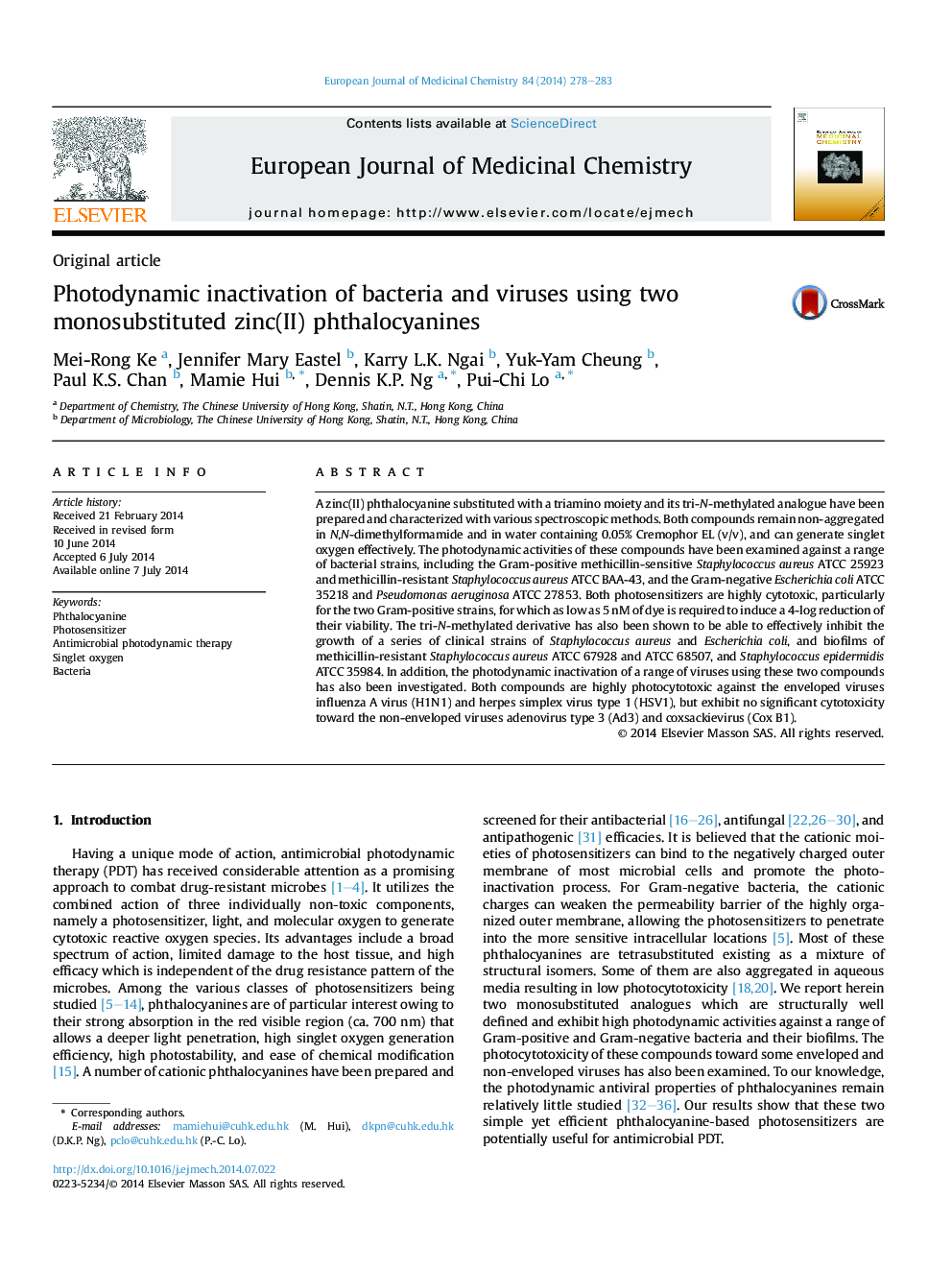| کد مقاله | کد نشریه | سال انتشار | مقاله انگلیسی | نسخه تمام متن |
|---|---|---|---|---|
| 1395609 | 1501132 | 2014 | 6 صفحه PDF | دانلود رایگان |

• Two zinc(II) phthalocyanines were prepared as photosensitizers for antimicrobial PDT.
• They are highly photocytotoxic toward a range of bacterial strains and viruses.
• Only 5 nM of dye is required to induce a 4-log reduction of the bacterial viability.
• Their photodynamic action can extend to several methicillin-resistant strains.
• They exhibit no significant cytotoxicity toward non-enveloped viruses.
A zinc(II) phthalocyanine substituted with a triamino moiety and its tri-N-methylated analogue have been prepared and characterized with various spectroscopic methods. Both compounds remain non-aggregated in N,N-dimethylformamide and in water containing 0.05% Cremophor EL (v/v), and can generate singlet oxygen effectively. The photodynamic activities of these compounds have been examined against a range of bacterial strains, including the Gram-positive methicillin-sensitive Staphylococcus aureus ATCC 25923 and methicillin-resistant Staphylococcus aureus ATCC BAA-43, and the Gram-negative Escherichia coli ATCC 35218 and Pseudomonas aeruginosa ATCC 27853. Both photosensitizers are highly cytotoxic, particularly for the two Gram-positive strains, for which as low as 5 nM of dye is required to induce a 4-log reduction of their viability. The tri-N-methylated derivative has also been shown to be able to effectively inhibit the growth of a series of clinical strains of Staphylococcus aureus and Escherichia coli, and biofilms of methicillin-resistant Staphylococcus aureus ATCC 67928 and ATCC 68507, and Staphylococcus epidermidis ATCC 35984. In addition, the photodynamic inactivation of a range of viruses using these two compounds has also been investigated. Both compounds are highly photocytotoxic against the enveloped viruses influenza A virus (H1N1) and herpes simplex virus type 1 (HSV1), but exhibit no significant cytotoxicity toward the non-enveloped viruses adenovirus type 3 (Ad3) and coxsackievirus (Cox B1).
Figure optionsDownload as PowerPoint slide
Journal: European Journal of Medicinal Chemistry - Volume 84, 12 September 2014, Pages 278–283